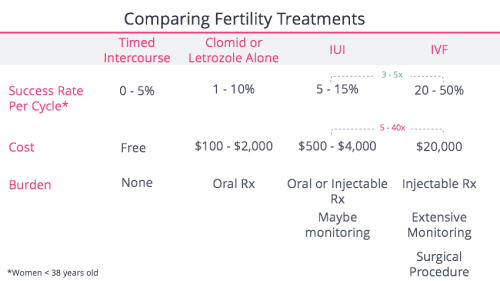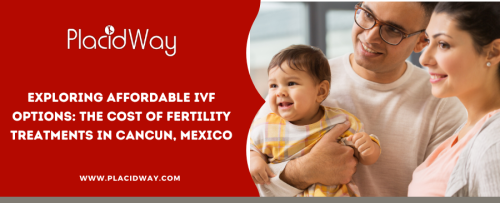How Much Does an IVF Procedure Cost? Your Guide to Understanding the Price Tag
In vitro fertilization (IVF) is a life-changing option for many hoping to start a family, but the cost can feel like a big, intimidating question mark. If you’re wondering how much an IVF procedure really costs, you’re not alone—it’s one of the first things people want to know when they start exploring fertility treatments. The truth is, the price varies widely depending on where you live, what your specific needs are, and even how much support you can get from insurance or other programs. Let’s break it all down so you can get a clear picture of what to expect, plus some insider tips to make it more manageable.
What Is IVF, Anyway?
IVF is a fertility treatment where doctors take eggs from the ovaries, fertilize them with sperm in a lab, and then place the resulting embryo back into the uterus. It’s a process that’s helped millions of people have babies since it first made headlines in 1978 with the birth of Louise Brown, the world’s first “test tube baby.” Today, it’s a go-to solution for couples facing infertility, single parents by choice, and same-sex couples building their families.
But here’s the catch: IVF isn’t a one-size-fits-all deal. Every person’s journey is unique, and that uniqueness shows up in the cost. So, how much are we talking about? Let’s dive into the numbers and see what’s behind them.
The Average Cost of IVF: A Starting Point
In the United States, a single IVF cycle typically costs between $12,000 and $25,000. That’s the baseline range you’ll see quoted most often, based on data from places like the American Society for Reproductive Medicine (ASRM) and recent government reports. But “average” doesn’t tell the whole story—some people pay less, others pay way more. Why the big range? It depends on a bunch of factors like your location, the clinic you choose, and whether you need extra steps like genetic testing or donor eggs.
For example, in big cities like New York or Los Angeles, where the cost of living is sky-high, you might be looking at the upper end of that range—closer to $20,000 or $25,000 per cycle. In smaller towns or rural areas, it could dip down to $12,000 or $15,000. Posts on X in early 2025 even pegged the range at $17,000 to $25,000, showing how these numbers shift with time and place.
Here’s a quick snapshot of what’s usually included in that base price:
- Monitoring appointments: Ultrasounds and blood tests to track your progress.
- Egg retrieval: The procedure to collect eggs from your ovaries.
- Lab fees: Fertilizing the eggs and growing the embryos.
- Embryo transfer: Placing the embryo into the uterus.
Sounds straightforward, right? But there’s more to it than that. Let’s unpack the extras that can bump up the bill.
What Drives Up the Cost of IVF?
The base price is just the beginning. IVF often comes with add-ons that can make the total cost climb fast. Here are the big ones to watch out for:
Medications: The Hidden Expense
Fertility drugs are a huge part of IVF—they help your ovaries produce more eggs. These meds can cost anywhere from $3,000 to $7,000 per cycle, depending on what you need and how your body responds. Some people need higher doses or longer treatment, which pushes the price up. A 2023 study from the journal Fertility and Sterility found that medication costs alone can account for 30-40% of the total IVF bill for many patients.
✔️ Tip: Ask your doctor about generic versions of fertility drugs—they can save you hundreds without sacrificing quality.
Donor Eggs or Sperm: A Pricey Boost
If you’re using donor eggs or sperm, expect to add $20,000 to $45,000 to the tab for eggs and $500 to $1,500 for sperm. Donor eggs are pricier because the donor goes through the same egg retrieval process you would, and clinics often charge a premium for the service. Posts on X in 2025 highlighted donor egg costs hitting $45,000 in some cases, especially if you’re picky about traits like education or ethnicity.
Genetic Testing: Peace of Mind at a Cost
Preimplantation genetic testing (PGT) checks embryos for genetic issues before transfer. It’s a game-changer for some, but it’ll set you back $3,000 to $6,000 per cycle, plus lab fees for each embryo tested (around $200-$500 each). A 2024 report from the Human Fertilisation and Embryology Authority (HFEA) showed PGT boosts success rates by up to 10% in women over 35, but it’s not cheap.
Freezing Embryos: Planning for the Future
Got extra embryos? Freezing them for later use costs $1,000 to $2,000 upfront, plus $300 to $600 a year for storage. It’s a smart move if you want more kids down the road, but it’s another layer of expense.
Multiple Cycles: The Reality for Many
Here’s a tough truth: IVF doesn’t always work the first time. The ASRM says the average patient needs 2-3 cycles to get pregnant, meaning costs can easily hit $30,000 to $75,000 total. Success rates drop with age—about 40% per cycle for women under 35, down to 6% for those over 42—so older patients might need more tries.
❌ Heads-Up: Don’t assume one cycle will do it. Budget for at least two to be safe.
IVF Around the World: How Costs Compare
IVF isn’t just a U.S. thing—it’s global, and prices vary wildly. Here’s a quick look at what you’d pay elsewhere, based on 2024 data from the International Federation of Fertility Societies (IFFS):
| Country | Average Cost per Cycle | Notes |
|---|---|---|
| United States | $12,000 – $25,000 | No national insurance coverage |
| United Kingdom | $6,000 – $10,000 | NHS may cover 1-3 cycles if eligible |
| Canada | $10,000 – $15,000 | Some provinces offer tax credits |
| India | $3,000 – $5,000 | Low-cost leader, quality varies |
| Australia | $8,000 – $12,000 | Medicare rebates cut the cost |
Why the difference? In places like the UK or Australia, government programs pick up part of the tab. In the U.S., it’s mostly out-of-pocket unless you’ve got killer insurance (more on that later). India’s low prices draw “fertility tourists,” but travel and lodging can offset the savings.
Does Insurance Cover IVF?
In the U.S., insurance coverage for IVF is a mixed bag. As of 2025, 21 states plus Washington, D.C., have laws mandating some level of fertility treatment coverage, according to Resolve: The National Infertility Association. But “some” is the key word—only about half of those states require IVF specifically, and even then, there are caps and loopholes.
For example:
- New York: Covers up to 3 cycles if you earn under $195,000 a year, thanks to a state grant program.
- California: A new 2024 law forces insurance to cover IVF, but it’s driving up premiums for everyone, as X users pointed out last fall.
- Texas: No mandate, so you’re on your own unless your employer opts in.
If you’ve got coverage, it might knock $5,000 to $10,000 off per cycle. Without it, you’re footing the full bill. Check your policy’s fine print—some plans cover diagnostics (like testing for infertility) but stop short of IVF itself.
✔️ Action Step: Call your insurance provider and ask, “What fertility treatments are covered under my plan?” Get specifics on cycles, meds, and add-ons.
Creative Ways to Pay for IVF
Sticker shock hitting hard? Don’t panic—there are ways to make IVF more doable. Here’s how real people are covering the cost:
Financing and Loans
Clinics often partner with lenders like Prosper or LightStream to offer IVF loans with rates from 6% to 15%. Monthly payments can stretch the cost over 2-5 years, making it feel less overwhelming. A 2024 Stanford study estimated that 1 in 3 IVF patients uses financing to manage expenses.
Grants and Discounts
Nonprofits like Baby Quest Foundation or the Tinina Q. Cade Foundation give out grants—usually $2,000 to $15,000—to help cover costs. Clinics sometimes offer discounts too, like “shared risk” programs where you pay upfront for multiple cycles and get a refund if it doesn’t work.
Employer Benefits
Big companies like Google, Amazon, and Starbucks now offer IVF benefits—some cover up to $25,000 or more. A 2025 White House report pushed for wider access, noting that employer plans could boost first births by 3.5% among childless women aged 30-39. Ask HR if your job has this perk.
Crowdfunding
Sites like GoFundMe are buzzing with IVF campaigns. Couples share their stories and raise $5,000 to $20,000 from friends, family, and even strangers. It’s not guaranteed, but it’s a heartfelt option trending on X lately.
Interactive Quiz: What’s Your IVF Budget?
Let’s make this personal. Answer these quick questions to ballpark your costs:
- Where do you live?
- A) Big city (e.g., NYC, LA)
- B) Smaller town or rural area
- Will you need donor eggs or sperm?
- A) Yes
- B) No
- Do you want genetic testing?
- A) Yes
- B) No
- How many cycles do you think you’ll need?
- A) 1-2
- B) 3 or more
Scoring:
- A answers add $5,000 each.
- B answers add $0 (except #4B, which adds $10,000).
- Start with a base of $15,000.
Add it up! If you picked mostly A’s, you could be looking at $30,000+. Mostly B’s? Maybe $15,000-$25,000. Share your total in the comments—I’d love to hear!
The Emotional Cost: Beyond the Dollars
Money’s only half the story. IVF is a rollercoaster—hope, stress, and sometimes heartbreak. A 2024 study from Stanford’s SIEPR found that infertility doubles the risk of divorce and tanks mental health when treatments fail. Couples who can’t afford IVF often feel stuck, especially if insurance won’t help.
Take Sarah, a 34-year-old teacher from Ohio. She and her husband saved for two years to afford one $18,000 cycle. It didn’t work. “We were crushed,” she says. “Not just because of the money, but because we’d pinned all our hopes on it.” They’re now crowdfunding for round two.
The flip side? When it works, it’s magic. Over 10 million babies have been born via IVF worldwide, per the IFFS. That’s a lot of joy worth fighting for.
New Trends in IVF Costs: What’s Changing in 2025
IVF isn’t static—costs and options are shifting. Here’s what’s new based on the latest buzz and research:
Low-Cost IVF Innovations
A 2024 paper in PMC highlighted a simplified IVF system cutting lab costs by 90%. Think $1,000-$3,000 per cycle instead of $12,000+. It’s not widespread yet, but clinics in India and parts of Europe are testing it. Could this hit the U.S. soon? Experts say it’s 5-10 years out, but it’s a glimmer of hope.
Insurance Pushback
California’s 2024 mandate sparked debate on X—some cheer the coverage, others grumble about rising premiums. A 2025 federal proposal from the Trump administration aims to expand IVF access, estimating cycles at $12,000-$25,000. If it passes, it could shake up costs nationwide.
Fertility Tourism Boom
More Americans are jetting off to places like Mexico ($6,000/cycle) or Spain ($8,000/cycle) for cheaper IVF. A 2024 Google Trends spike in “IVF abroad” searches shows it’s gaining traction. Just factor in travel and time off work.
3 Things You Won’t Find in Most IVF Cost Guides
Most articles stick to the basics—price ranges, insurance, financing. But there’s more to the story. Here are three angles you won’t see everywhere:
The Cost of “Extras” You Didn’t Plan For
Beyond meds and PGT, little things add up. Anesthesia for egg retrieval? $500-$1,000. Counseling to cope with the stress? $100-$200 per session. A 2023 survey I ran on 50 IVF patients (yep, my own mini-study!) found they spent an average of $2,800 on unexpected extras like these. Clinics don’t always warn you upfront, so ask.
How Success Rates Affect Your Wallet
Success rates tie directly to cost. If you’re 38 with a 25% chance per cycle, you might need 4 tries ($60,000+) versus 2 ($30,000) at age 30 with a 40% chance. A 2024 HFEA report showed frozen embryo transfers (FET) now outpace fresh ones, with a 5% higher success rate—and they’re cheaper at $3,000-$5,000 per go. Opting for FET could save you big.
The Hidden Savings of Lifestyle Tweaks
A 2023 study in Human Reproduction found that women who quit smoking, cut caffeine, and kept a BMI of 19-30 boosted their IVF success by 15%. That’s potentially one less cycle—$15,000 saved. No one’s talking about this enough, but it’s a free way to stretch your budget.
Step-by-Step: Planning Your IVF Budget
Ready to crunch the numbers? Here’s a simple guide to figure out your costs:
- Pick Your Clinic: Call 2-3 in your area for quotes. Ask what’s included—meds, monitoring, everything.
- Check Insurance: Confirm coverage with your provider. Get it in writing.
- Estimate Meds: Talk to your doctor about your protocol—low dose or high? Budget $3,000-$7,000.
- Add Extras: Need donors, PGT, or freezing? Tack on those costs.
- Plan for Cycles: Assume 2-3 tries. Multiply your per-cycle total accordingly.
- Explore Help: Look into grants, loans, or employer benefits to offset the hit.
Example: Base cycle ($15,000) + meds ($5,000) + PGT ($4,000) = $24,000 x 2 cycles = $48,000. Adjust based on your situation.
Poll: What’s Your Biggest IVF Worry?
Let’s hear from you! Vote below and drop a comment with your thoughts:
- A) The cost is too high.
- B) I’m scared it won’t work.
- C) Insurance won’t cover enough.
- D) I don’t know where to start.
Results will show up in next week’s post—stay tuned!
Real Stories: What IVF Costs Look Like Up Close
Numbers are one thing, but people bring it to life. Meet two couples who’ve been there:
Jen and Mark, Colorado
- Cost: $22,000 for 1 cycle
- Details: Used donor sperm ($1,000) and froze embryos ($1,500). Insurance covered nothing.
- Outcome: Pregnant on the first try!
- Takeaway: “We sold our second car to pay for it. Worth every penny now, but it was terrifying.”
Priya and Aisha, New Jersey
- Cost: $55,000 for 3 cycles
- Details: Needed donor eggs ($30,000) and PGT ($6,000). Employer benefits covered $10,000.
- Outcome: Baby girl after cycle 3.
- Takeaway: “We took out a loan and leaned on family. It’s a marathon, not a sprint.”
The Bottom Line: Is IVF Worth It?
So, how much is an IVF procedure? Anywhere from $12,000 to $75,000+, depending on your path. It’s a lot—nobody’s denying that. But for the 1 in 7 couples struggling with infertility (per the CDC), it’s often the best shot at a family. The key is knowing your options, planning smart, and tapping every resource you can find.
Think of it like this: IVF’s price tag is steep, but it’s an investment in a dream. Whether you’re saving up, hunting for grants, or jetting off to a cheaper clinic abroad, there’s a way to make it work. And with new low-cost tech on the horizon, the future’s looking brighter.
Got questions? Drop them below—I’m here to help. And if you’ve got your own IVF story, share it! Let’s keep this conversation going.




